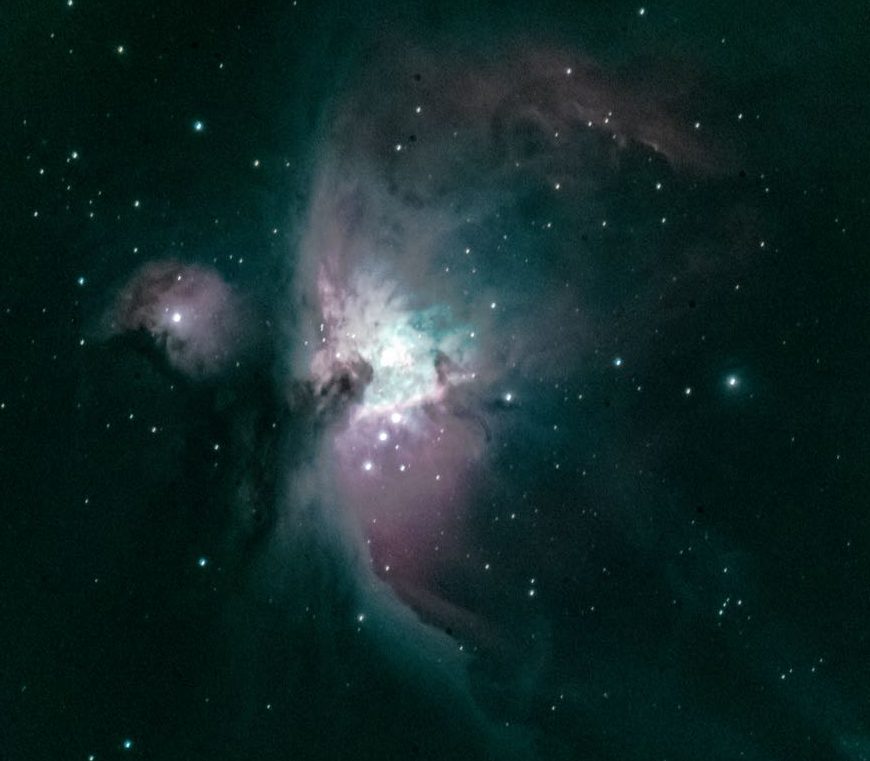January has ended and we now look forward to a brand new month for. Wondering what’s going to be up in the sky for this coming month? The following is a list of astronomical events for February 2018. All dates and times were given in UAE Local Time.
February 8, 2018: Moon – Jupiter Close Approach
The Moon and the largest planet Jupiter will appear close to each other in the sky on the early morning hours of this day. It will be seen at the east-southeastern horizon from around 2 AM until sunrise. These celestial objects will be situated in the faint constellation Libra (the scales). The Waning Crescent Moon will be about 4° west of Jupiter. Jupiter would look like a bright white “star”. Also seen nearby is Mars; appear as a bright reddish dot situated about 14° southwest of both Mars and Moon. This will be a good opportunity for selenophiles and planet gazers to observe and image the said celestial objects.

February 9, 2018: Moon-Mars Close Approach
The Moon and the red planet Mars will appear close to each other in the sky on the early morning hours of this day. It will be seen at the east-southeastern horizon from 3 AM until sunrise. These celestial objects will be situated in the constellation Scorpius (the scorpion). The Waning Crescent Moon will be about 4.8° northwest of Mars. Mars would look like a bright reddish dot. Also seen nearby is Jupiter; appear as a bright white “star” situated about 16° northeast of both Mars and Moon. This will be a good opportunity for selenophiles and planet gazers to observe and image the said celestial objects.

February 11, 2018: Moon – Saturn Close Approach
The Moon and the ringed planet Saturn together will appear close to each other in the sky on the early morning hours of this day. It will be seen at the east-southeastern horizon from 4:30 AM until sunrise. All celestial objects will be situated in the constellation Sagittarius (the archer). The Waning Crescent Moon will be about 4° north of Saturn. Saturn would look like a bright yellow-orange star. Also seen nearby are planets Mars and Jupiter situated much higher in the south-southeastern portion of the sky. This will be a good opportunity for selenophiles and planet gazers to observe and image the said celestial objects.

February 17, 2018: New Moon
On this day, the moon will not be visible as it will be situated on the same side of the Earth as the Sun, in the constellation of Aquarius (the water bearer). With no moonlight glaring much of the night sky, this is the best time to observe the deep sky objects throughout the night. It is predicted that the lunar phase will occur on this day. The month transition from Djumada l-Ula to Djumada l-Akhira shall take place on the same day in accordance with the Hijri Calendar 1439.
In the UAE and other regions in the Northern Hemisphere, February is still on the winter period but on its last burst. Many brilliant prominent winter constellations and deep-sky objects will be seen during night time and early morning hours such as the Great Orion Nebula, The Flame and Horsehead Nebula, Andromeda Galaxy, and the brilliant open star cluster Pleiades known as the “Seven Sisters” in Taurus.
The very faint bluish planet Uranus can be seen in the early evening hours, from 7 PM until around 11 PM. Planets Mars and Jupiter will be visible from around 3:15 AM onwards until sunrise. Saturn will appear few minutes before sunrise, particularly around 6 AM. The other ones, Mercury, Venus, and Neptune are either barely or not visible, depending on their respective apparent positions in the sky. For this month, sunrise occurrences range between 7:04 AM to as early as 6:46 AM while sunsets shall happen between 6:07 PM to as late as 6:24 PM.
Have a pleasant February, everyone! Clear Skies!


Andromeda Galaxy, The Great Orion Nebula, Pleiades, and the Flame and Horsehead Nebula taken from Al Sadeem Observatory
References
Astronomy Calendar of Celestial Events 2018. (n.d.). Retrieved from Sea and Sky: www.seasky.org/astronomy/astronomy-calendar-2018.html
Calendar of Astronomical Events. (n.d.). Retrieved from In-The-Sky.org: http://in-the-sky.org/newscal.php?year=2018&month=1&maxdiff=4 #datesel
Islamic calendar 2018. (n.d.). Retrieved from Calendar.sk: https://calendar.zoznam.sk/islamic_calendar-en.php?ly=2018
Sunrise and sunset times in Abu Dhabi, February 2018. (n.d.). Retrieved from timeanddate.com: https://www.timeanddate.com/sun/united-arab-emirates/abu-dhabi?month=2&year=2018



